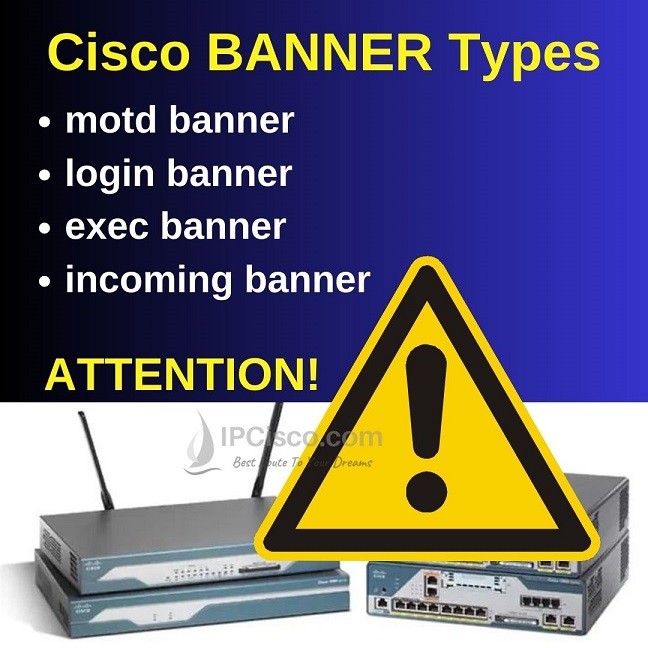- COURSES
- SPECIALS
- BLOG
- MEMBERS
- SHOP
- ABOUT
- ENROLL HERE

It is important to inform router administrators or network engineers about important points before router configurations. In Cisco routers and switches, we can configure different types of messages to inform the users. In this lesson, you will learn Cisco Banner Configuration on Cisco Packet Tracer. These are banner motd (message of the day), banner login, banner exec and incoming banner messages.
Before Cisco Banner Configuration on Cisco Packet Tracer, let’s explain why we use these different banners on Cisco routers and switches.
You Can DOWNLOAD Cisco Packet Tracer Labs and Cisco GNS3 Labs.
You Can DOWNLOAD Huawei eNSP Labs and Nokia GNS3 Labs.
Table of Contents
The first message type is banner MOTD, in other words, Message Of The Day. This message is used to inform users before the authentication. When the router or switch restarts, banner modt message is displayed if are there any banner modt message was configured. This message is a temporary message specific to that day or a couple of days.
So, how to configure banner motd in Cisco routers or switches? To do this, we will use “banner motd” command with a delimeter character which shows the end of the message. This character can be any character like %, $, #, * etc. Here, let’s use *.
Router# configure terminal
Router(config)# banner motd *
Enter TEXT message. End with the character '*'.
Hello! How are you today? *
Router(config)# exit
Router# write
After this Cisco banner configuration on Packet Tracer, when we restart the router, we will see this message. Below, you can see the screenshot after restart.
Router con0 is now available
Press RETURN to get started.
Hello! How are you today?
User Access Verification
Username:
The second message that we can configure on Cisco routers or switches is banner login message. Banner login message is also displayed before the user authentication after banner motd message. But this time, our aim is warning the user about some security warnings. Banner login message is used more seriously than banner motd.
With banner login configuration, again we use a delimiting character to determine end of the message.
Router# configure terminal
Router(config)# banner login #
Enter TEXT message. End with the character '#'.
Be careful about static routing! #
Router(config)# exit
Router# write
The third banner mode is banner exec. This message is displayed after the authentication but before the user exec mode. Banner exec is more serious message that the others.
Router# configure terminal
Router(config)# banner exec &
Enter TEXT message. End with the character '&'.
If you are not an authorized person, log out immediately! &
Router(config)# exit
Router# write
Let’s look at all these three banners on Cisco router after device restart.
Router con0 is now available
Press RETURN to get started.
Hello! How are you today?
Be careful about static routing!
User Access Verification
Username: ipcisco
Password: *****
If you are not an authorized person, log out immediately!
Router>
As you can see in these Cisco banner message configurations, all these messages are useful to inform or warn the users of Cisco routers and switches.
You Can DOWNLOAD Cisco Packet Tracer Labs and Cisco GNS3 Labs.
You Can DOWNLOAD Huawei eNSP Labs and Nokia GNS3 Labs.
Leave a Reply